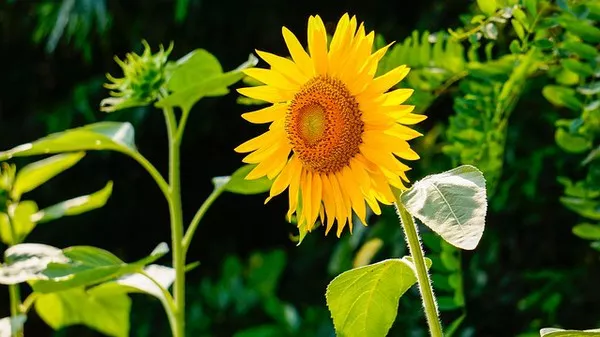Sunflowers, with their vibrant yellow petals and towering stems, are iconic symbols of summer and warmth. These captivating blooms not only beautify gardens but also serve as a source of food and oil. Preserving sunflowers ensures that their beauty and usefulness are extended beyond their natural bloom period. Whether you’re a gardener looking to prolong the lifespan of your sunflowers or a florist aiming to maintain their freshness, understanding the factors affecting preservation and employing appropriate methods is essential. This comprehensive guide delves into the nuances of preserving sunflowers, covering factors influencing preservation, methods, and invaluable tips for maximizing longevity.
Factors Affecting Preservation
Preservation efforts are influenced by various factors, each playing a crucial role in determining the lifespan and quality of preserved sunflowers. Understanding these factors empowers individuals to make informed decisions regarding preservation techniques. Here are key factors to consider:
1. Temperature and Humidity: Temperature and humidity levels significantly impact the preservation of sunflowers. Extreme temperatures can cause wilting or premature aging, while excessive humidity may lead to mold growth. Ideal conditions for sunflower preservation typically involve cool temperatures and moderate humidity levels.
2. Water Quality: The quality of water used for hydrating sunflowers affects their longevity. Clean, filtered water free from contaminants is ideal for preserving sunflowers. Chlorinated water or water containing impurities can accelerate decay and reduce vase life.
3. Sunlight Exposure: Sunflowers are inherently sun-loving plants, but prolonged exposure to direct sunlight post-harvest can hasten their deterioration. Avoid placing sunflowers in direct sunlight for extended periods, as this can lead to wilting and loss of vibrancy.
4. Handling and Transportation: Proper handling and transportation are crucial for preserving sunflowers. Rough handling during harvesting or transportation can damage delicate petals and stems, accelerating decay. Gentle handling and careful packaging can minimize physical damage and prolong freshness.
5. Ethylene Exposure: Ethylene, a natural plant hormone, accelerates the ripening and senescence of flowers, including sunflowers. Exposure to ethylene-producing fruits, such as apples and bananas, can hasten the aging process of sunflowers. Keep sunflowers away from ethylene sources to extend their vase life.
Methods of Preserving Sunflowers:
Preserving sunflowers involves employing suitable techniques to maintain their freshness and vitality for as long as possible. Several methods can be utilized to preserve sunflowers, each catering to different preservation needs and preferences:
1. Water Preservation Method: This traditional method involves placing freshly cut sunflowers in a vase filled with clean water. Trim the stems at an angle before placing them in the vase to facilitate water absorption. Change the water every two days and trim the stems slightly to ensure optimal hydration and longevity.
2. Preservative Solutions: Commercial floral preservatives contain ingredients that inhibit bacterial growth, maintain water pH, and provide nutrients to prolong the vase life of sunflowers. Adding floral preservatives to the water in vases can enhance the longevity and freshness of preserved sunflowers.
3. Drying Sunflowers: Drying sunflowers is a popular method for preserving their beauty beyond their natural bloom period. Hang freshly harvested sunflowers upside down in a dry, well-ventilated area away from direct sunlight. Allow them to air dry completely, retaining their shape and color for decorative purposes.
4. Freezing Method: Freezing sunflowers is a unique preservation technique that involves freezing individual petals or whole blooms. Place freshly harvested sunflower petals or blooms in an airtight container or freezer bag and store them in the freezer. Frozen sunflowers can be used for crafting or decorative purposes.
5. Silica Gel Method: Silica gel, a desiccant, can effectively preserve the shape and color of sunflowers by absorbing moisture. Place sunflower blooms in a container filled with silica gel and gently cover them until completely submerged. Allow the blooms to dry for several days before carefully removing them from the silica gel.
Tips for Preserving Sunflowers
Achieving optimal preservation results requires attention to detail and adherence to best practices. Incorporate these tips into your sunflower preservation routine to maximize freshness and longevity:
1. Harvest at the Right Time: Harvest sunflowers early in the morning or late in the evening when temperatures are cooler to minimize stress on the plants. Choose sunflowers with fully developed petals and firm stems for optimal vase life.
2. Proper Hydration: Ensure sunflowers are adequately hydrated by placing them in clean water immediately after harvesting. Hydrate sunflowers in a cool, shaded area to prevent wilting and dehydration.
3. Remove Foliage: Remove any foliage that will be submerged in water to prevent bacterial growth and maintain water clarity. Trim excess leaves and foliage from sunflower stems before placing them in vases or containers.
4. Regular Maintenance: Monitor preserved sunflowers regularly and perform maintenance tasks such as changing water, trimming stems, and removing wilted petals or foliage. Proper maintenance extends the vase life of sunflowers and ensures their continued freshness.
5. Storage Considerations: Store preserved sunflowers in a cool, dry place away from direct sunlight and ethylene-producing fruits. Avoid placing sunflowers near heating vents or appliances that emit heat, as this can accelerate wilting and decay.
6. Reviving Wilted Sunflowers: If sunflowers begin to wilt prematurely, revive them by submerging the entire blooms in lukewarm water for several hours. This process helps rehydrate wilted petals and rejuvenate sunflowers for extended enjoyment.
Conclusion
Preserving the radiant beauty of sunflowers requires a combination of proper handling, environmental control, and preservation techniques. By understanding the factors influencing preservation, employing suitable methods, and implementing valuable tips, individuals can prolong the lifespan and freshness of sunflowers for enhanced enjoyment and decorative purposes. Whether adorning a vase or serving as inspiration for artistic endeavors, preserved sunflowers continue to captivate and inspire long after their natural bloom period has passed.


